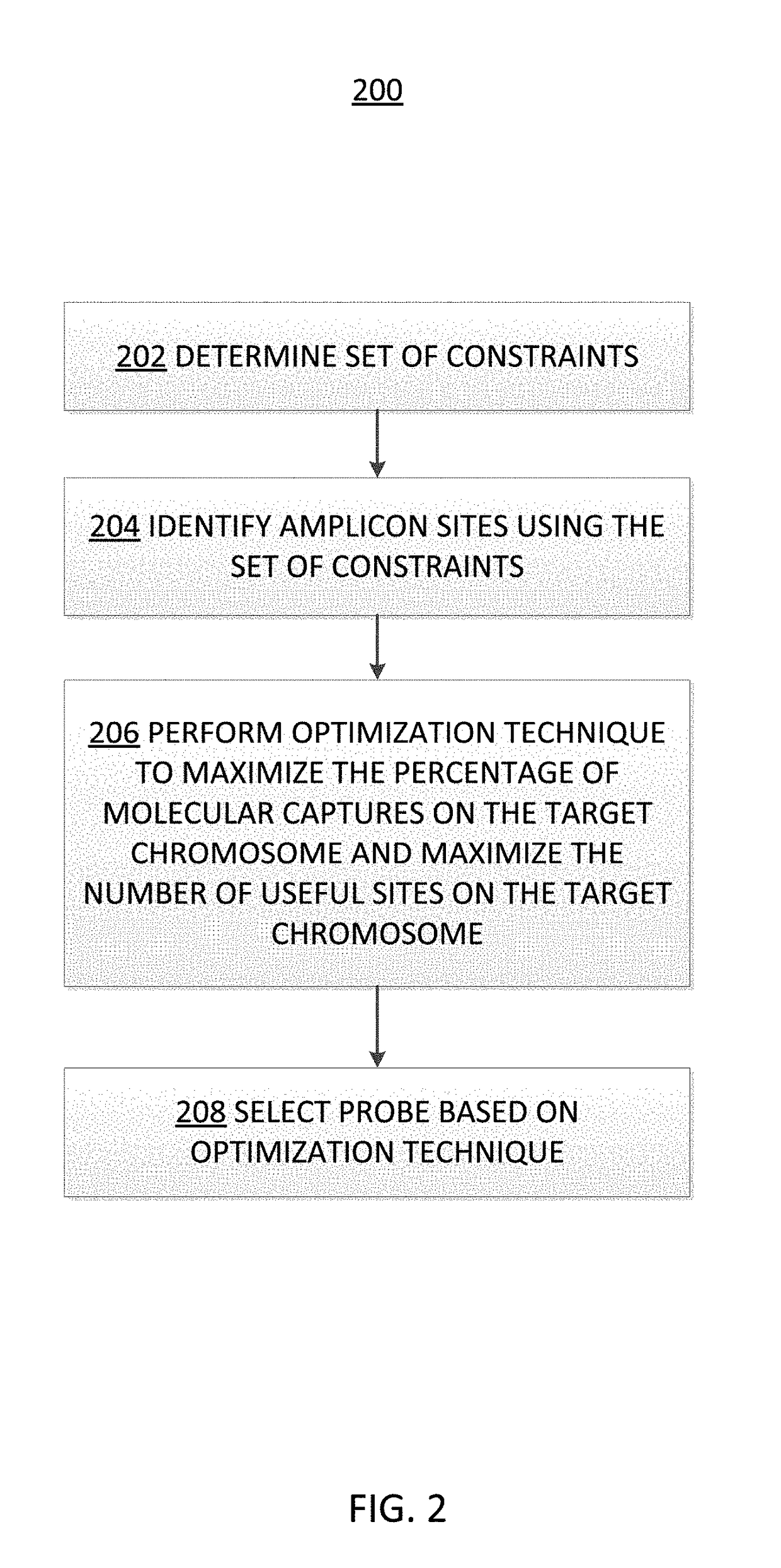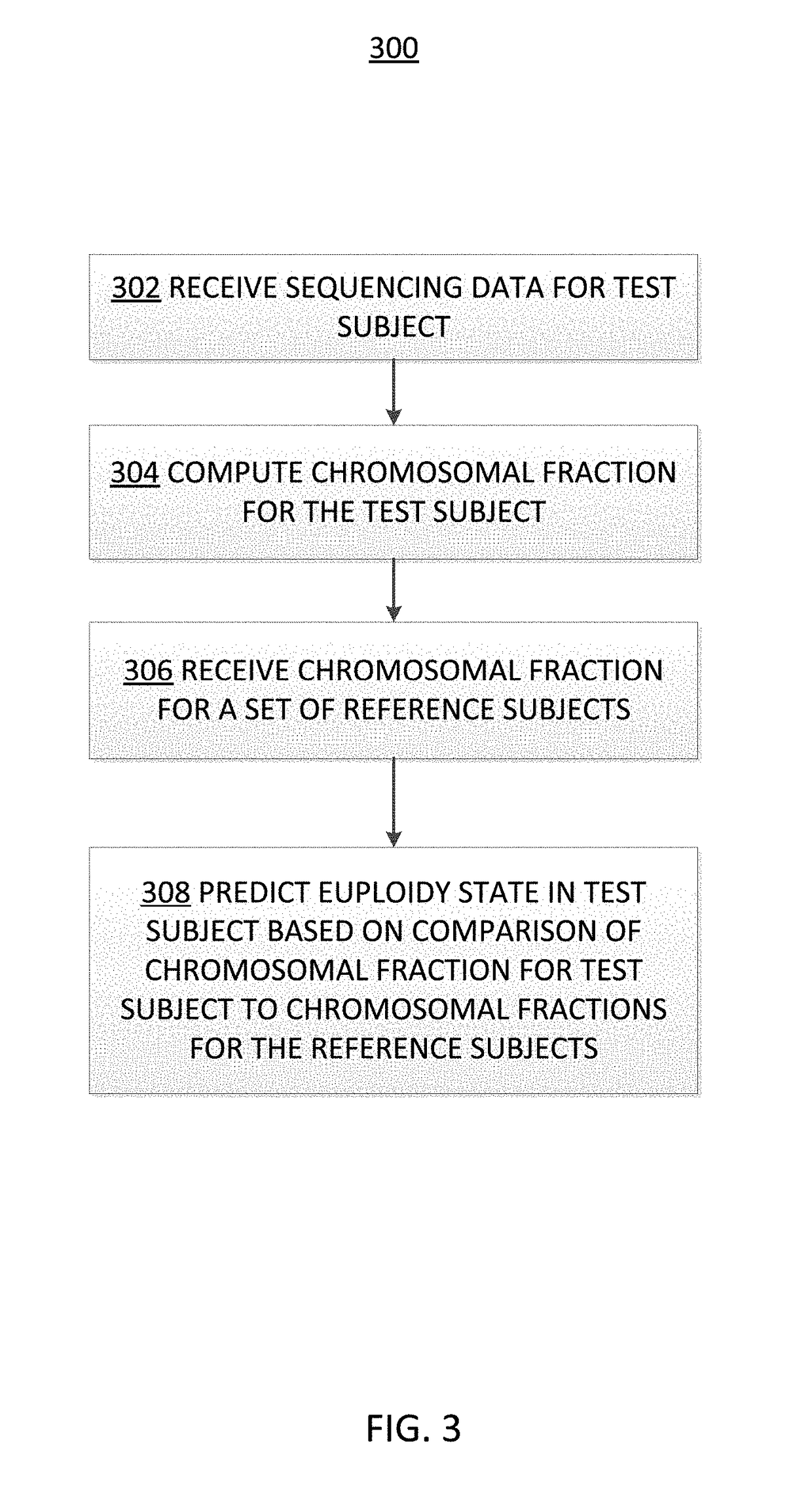Nucleic acids and methods for detecting chromosomal abnormalities
a chromosomal abnormality and nucleic acid technology, applied in the field of system and method for determining, can solve the problems of increased risk of fetal aneuploidy, non-negligible risk of fetal loss, and long life-long challenges for families and societies
- Summary
- Abstract
- Description
- Claims
- Application Information
AI Technical Summary
Benefits of technology
Problems solved by technology
Method used
Image
Examples
example 1
MIP Design and Method for Capturing Target Sequences of Interest
Probe Construction
[0411]A single oligonucleotide ranging in size between 80 and 105 bp (depending on the length of the first and second targeting polynucleotide arms) is synthesized as shown in FIG. 5. The 6N boxes refer to molecular tag sequences that are used to quantitate capture events for each target sequence of interest. In this particular embodiment, instead of counting reads, the number of unique sequences per captured site are counted.
Site Capture Reaction
[0412]The first and second targeting polynucleotide arms (at an empirically determined concentration) is mixed with csDNA extracted from 1-2 mL plasma in a 20 uL buffered reaction. The mixture is incubated in a thermocycler at temperatures that have been optimized for annealing of probes to the template (98° C. for 3 min→85° C. for 30 min→66° C. for 15 min). During this incubation, the probe molecules anneal to the csDNA template at specific chromosomal locati...
example 2
Sequence Data Analysis and Detection of Aneuploidy in a Subject
[0416]Raw sequencing data must be processed in order for it to be useful in detecting aneuploidy. To start, sequencing reads are filtered to remove known artifacts such as probe-to-probe interaction, backbone sequences or adapter sequences. The ligation and extension arms of the MIP (i.e., the first and second targeting polynucleotide arms) are then matched to the sequence reads, allowing a maximum of one base pair mismatch in each arm. Reads that fail to meet this criterion are treated as invalid and discarded. The arm sequences for the valid reads are trimmed to remove the non-genomic portions from the sequence data by deleting the sequence from the read files used in subsequent processing steps. At the same time, the molecular tags from both the ligation and the extension ends are kept separately for counting of the capture events in a later step. The trimmed reads are aligned to the human genome (hg19) with the bowti...
example 3
Detection of Trisomy 13, 18, and 21 in Pregnant Subjects
[0418]This example describes using the method described herein to discriminate (or distinguish) between pregnant women carrying trisomy 13, 18, and 21 and healthy pregnant women.
Determination of Z-Score Cutoffs for Detecting Trisomy 13, 18, and 21
[0419]A training set of 48 plasma samples from pregnant women (study approved by institutional review board) is used to determine Z-score cutoffs for detecting trisomy 13, 18, and 21. Each of the plasma samples is taken from a different pregnant woman. The 48 plasma samples contain 40 healthy samples, four Trisomy 21 samples, three Trisomy 18 samples, and one Trisomy 13 sample. Trisomy cases are confirmed by karyotype analysis of placental or fetal cells collected by CVS (Chorionic villus sampling) or amniocentesis.
[0420]Site capture reaction: Plasma DNA extracted from each of the 48 pregnant women is subjected to a site capture reaction as follows: the extracted plasma DNA ismixed wit...
PUM
| Property | Measurement | Unit |
|---|---|---|
| melting temperature | aaaaa | aaaaa |
| melting temperature | aaaaa | aaaaa |
| length | aaaaa | aaaaa |
Abstract
Description
Claims
Application Information
 Login to View More
Login to View More - R&D
- Intellectual Property
- Life Sciences
- Materials
- Tech Scout
- Unparalleled Data Quality
- Higher Quality Content
- 60% Fewer Hallucinations
Browse by: Latest US Patents, China's latest patents, Technical Efficacy Thesaurus, Application Domain, Technology Topic, Popular Technical Reports.
© 2025 PatSnap. All rights reserved.Legal|Privacy policy|Modern Slavery Act Transparency Statement|Sitemap|About US| Contact US: help@patsnap.com



